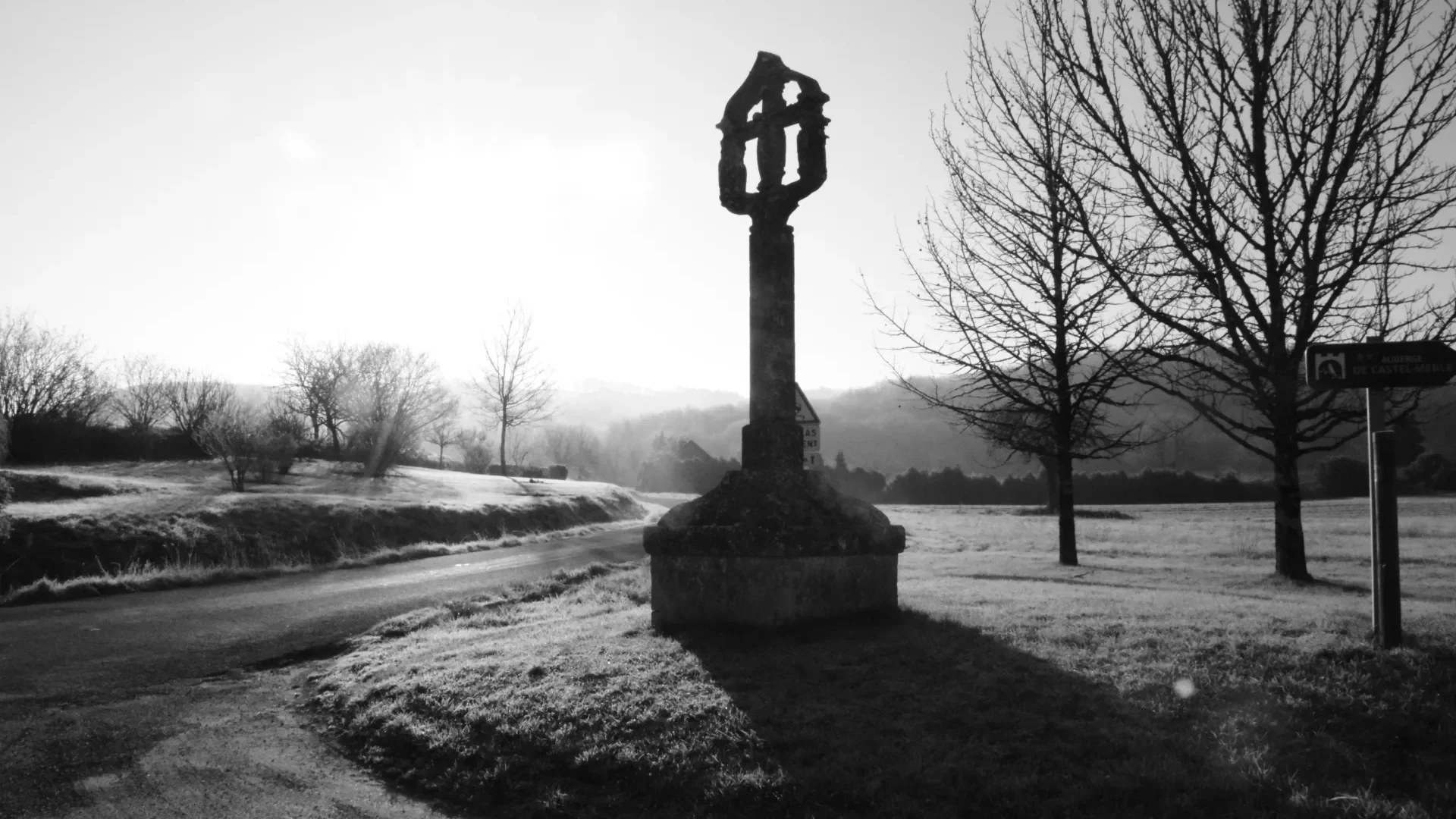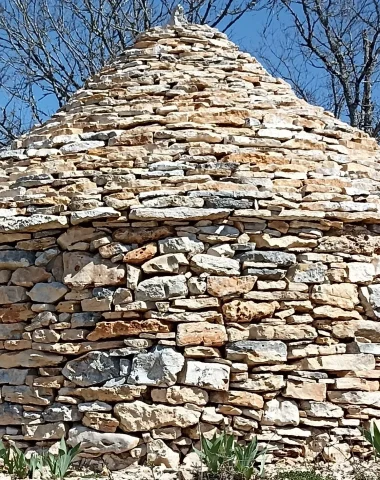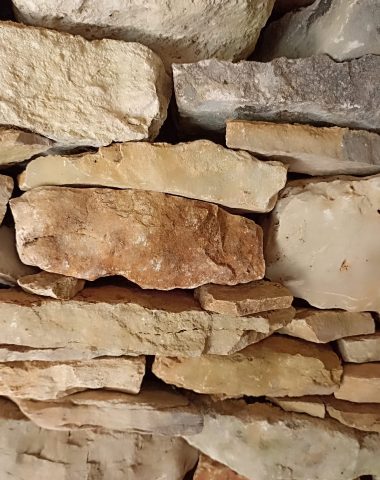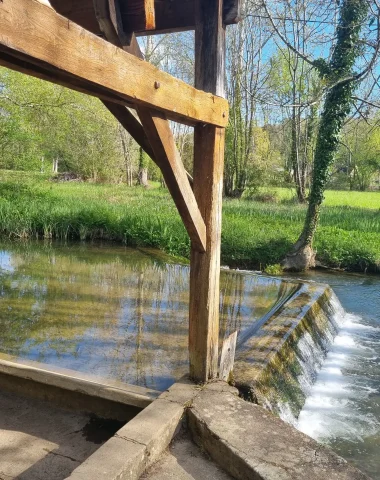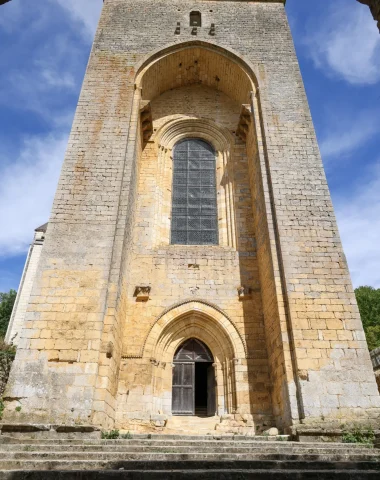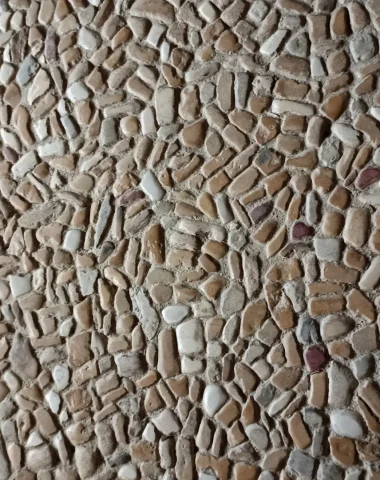Calvaries and crosses, an ancient tradition
The cross was originally placed in the village cemetery near church. It has been customary since the 15th century for crosses to be built in cemeteries, at crossroads, sometimes in towns. Many demonstrations took place around it, it served as a rallying point during the Palm Sunday procession, we stopped at the foot of the cross to sing the “hosanna"(save us) in supplication of various events in the life of Christians.
The Fanlac cross
That of Fanlac is remarkable, very ornate, we can see at the foot of the cross under the sun, the disciple John, under the moon, the virgin Mary. Under Christ's feet is a human skull, which recalls the name of the place of sacrifice. : Golgotha which in Aramaic means “skull”.
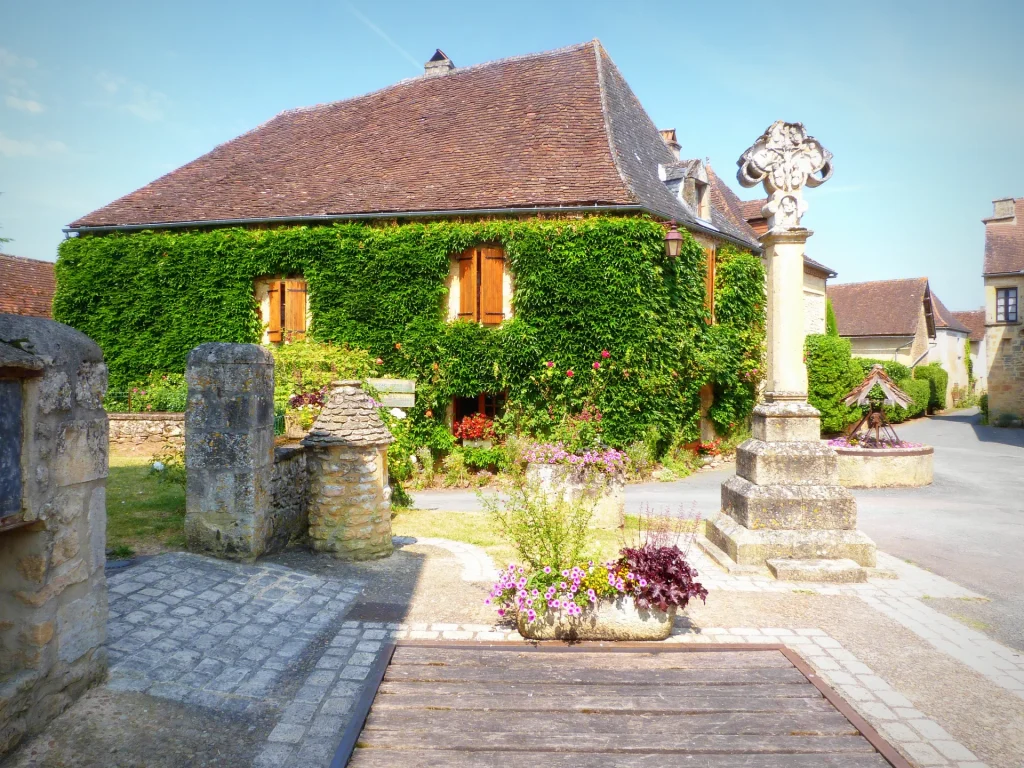
At the base of this ensemble appears a man-at-arms, kneeling, in prayer who carries a spear in front of him: all according to the custom of the 14th century. This is probably the brand of donors.
The summit forms a geometric figure in 4 cells which symbolically evoke the created world.
In the center, Christ on the cross with at the top of his head, the strongly altered inscription which means: "Jesus of Nazareth king of the Jews", above his arms, appear on his right the sun, on his left the moon .
On each side of the cross is an angel who collects the blood from the wound in a bowl.
Sergeac's cross
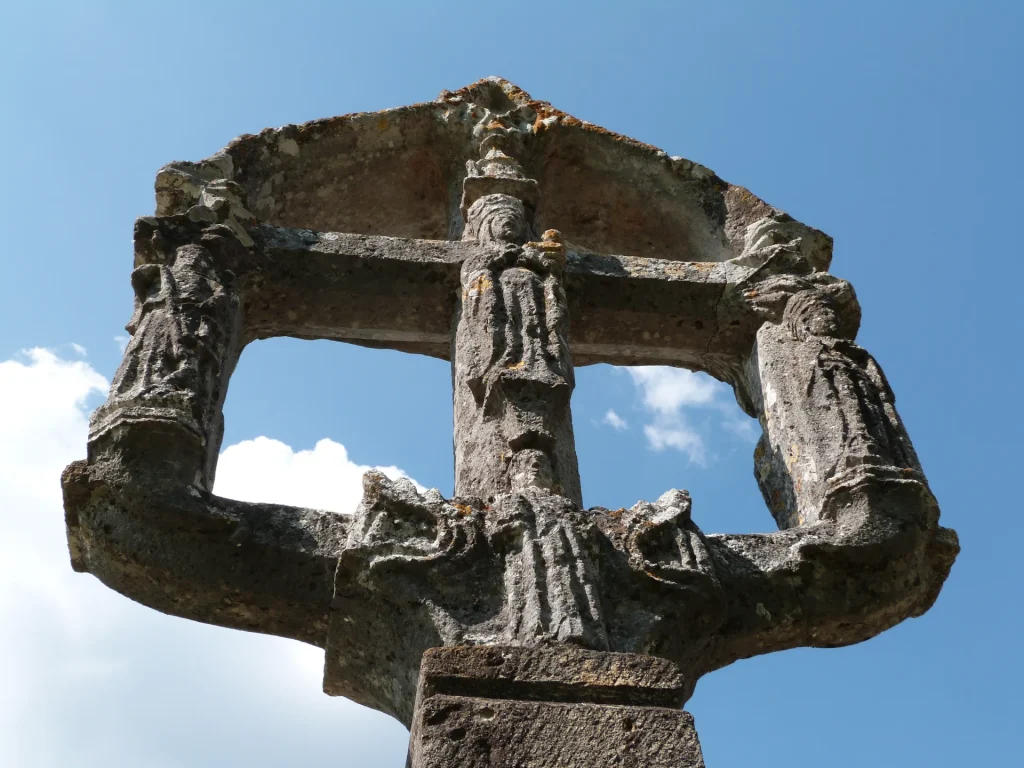
A few kilometers away, the cross of Sergeac which dates from the 16th century is surprising by its medieval style uncommon in Périgord, we can see Christ between the Virgin and Saint John.
